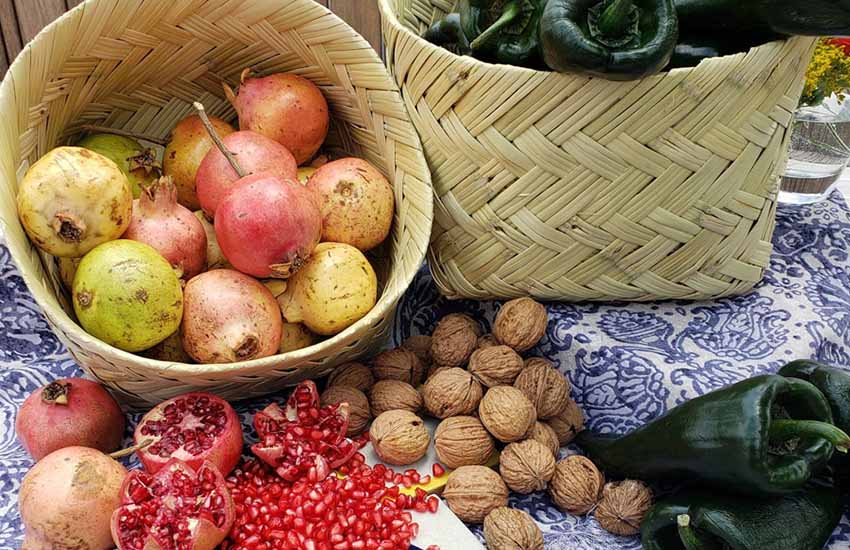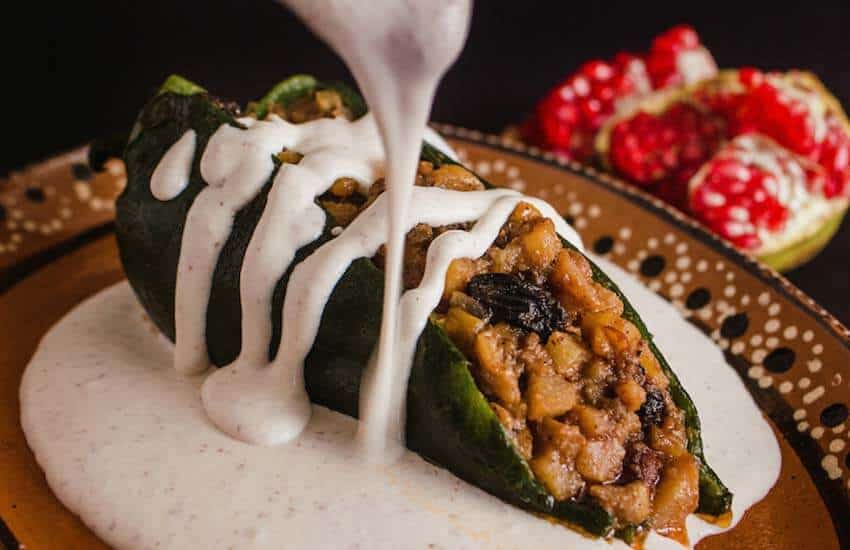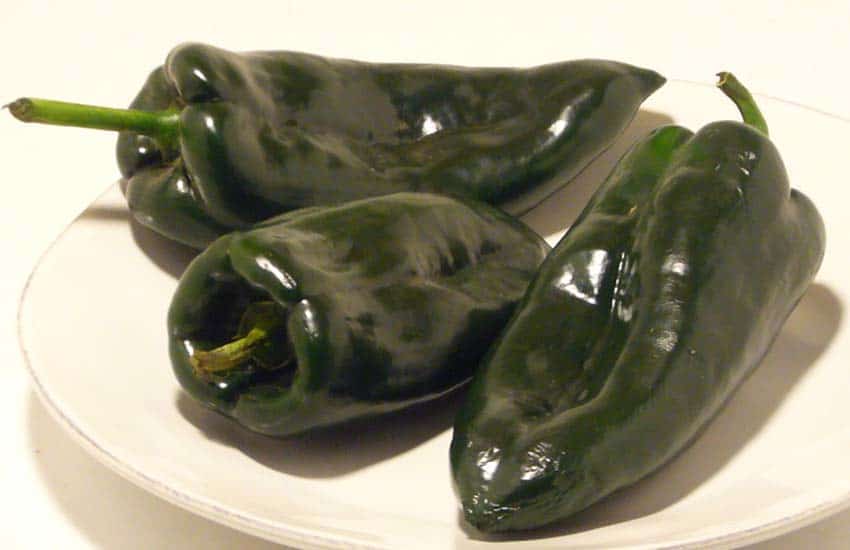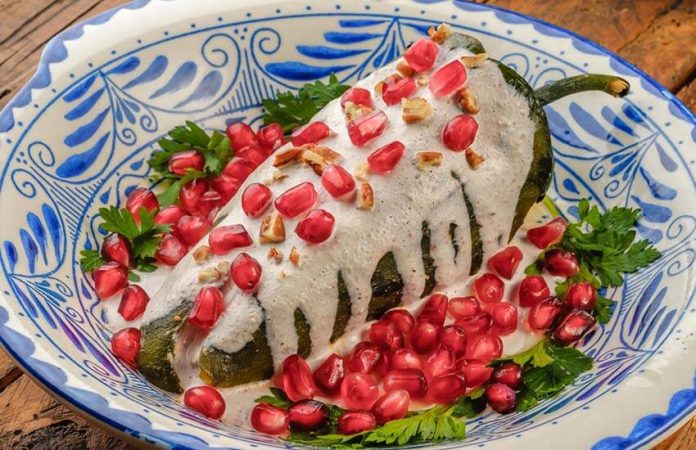All over Mexico, people are preparing to celebrate the real Mexican Independence Day on Sept. 16 (not the uber-commercialized “5 de Mayo” holiday that actually commemorates the Mexican army’s victory over French forces in Puebla in 1862).
And while COVID-19 precautions may throw a damper on the public festivities, one thing’s for sure: chiles en nogada will certainly be served in restaurants and homes everywhere.
This iconic Mexican dish has its roots in the state of Puebla, where legend says it was created by nuns — either the Madres Contemplativas Agustinas or the Monjas Clarisas — in honor of Agustín de Iturbide, a controversial army general and future emperor of Mexico whose credits include designing the Mexican flag but whose career was marred by charges of cruelty and corruption.
Ahh, but I digress; back to chiles en nogada.
As pretty as it is delicious, this baroque masterpiece is quite detailed both in its ingredients and preparation.

Local and in-season ingredients like pomegranates and walnuts, autumn fruits like pear and apple and, of course, Puebla’s namesake, poblano peppers, are combined to create a unique, flavorful entrée.
The dish’s colors are those of the Mexican flag — red, white and green — a fact that only adds to its appeal.
One of its most unusual features is the salsa de nogada, a creamy walnut- or almond-based sauce that drenches the poblano pepper, traditionally stuffed with a picadillo, or hash, of pork, beef, dried fruits and sweet spices. Pecans or almonds can be substituted for the traditional walnuts, and cream cheese can be used instead of goat cheese.
Vegetarian? Use mushrooms in the filling instead of meat, or another stuffed pepper filling you’ve used before, adding diced fall fruit, raisins and the sweet spices in the traditional recipe.
The dish is as much a celebration of the autumn season as it is of the historical event, so you can let your imagination be your guide if dietary restrictions prevent you from following the classic recipe.
Whatever the case, gather your ingredients — don’t forget the pomegranate! — and plan your Independence Day celebration. Viva México!

Chiles en Nogada
Some recipes call for the peppers to be deep-fried; this one doesn’t.
- 10 poblano peppers
Filling:
- ¼ lb. ground beef
- ¼ lb. ground pork
- 1 cup tomato sauce
- 1 white onion, diced
- 5 cloves garlic
- ¼ tsp. cinnamon
- 3 black peppercorns
- ¼ tsp. ground cloves
- ½ tsp. dried thyme
- 1 tsp. salt
- 1 tsp. sugar
- ½ large apple, diced
- ½ pear, diced
- 1 peach, diced
- ½ ripe plantain, diced
- ¼ cup raisins
- 1 tsp. olive oil
Salsa:
- 2 cups walnuts or almonds
- ½ cup milk
- 3 oz. goat cheese or cream cheese
- 1 Tbsp. sugar
- Salt to taste
- Garnish: Pomegranate seeds, chopped parsley
Prepare peppers by removing the skins. With a gas stove, use tongs to char peppers over the flame until blackened on all sides. Or char them on a hot comal, turning frequently till blackened.

Let cool; peel off skin. (Cooling peppers in a paper or plastic bag for about 10 minutes will make skins easier to peel off.) Carefully slit peppers open on one side. Remove seeds, leaving stems attached and peppers whole.
To make the salsa: steep nuts in hot water for about 20 minutes to make it easier to remove skins. After slipping off skins, place nuts in cool water for 15 more minutes. In a blender, place milk, goat/cream cheese, sugar and nuts; blend until smooth. Add salt to taste and set aside.
Pour oil into a skillet. Sauté half the onion, peppercorns and garlic for 2–3 minutes. Transfer to a blender. Add tomato sauce, thyme and cloves. Blend until smooth. In the same pan, add remaining onion, the meats and 1 tsp. salt. Sauté, stirring, until meat is cooked through.
Over medium-low heat, add diced fruits and plantain and cook 5 minutes more. Add cinnamon and sugar; cook, stirring, for 3 more minutes. Add tomato sauce mixture and let simmer until most liquid has evaporated but mixture is still moist.
Once meat and sauce are ready, stuff each cleaned and prepared poblano pepper with filling.
Smother with the salsa, then garnish with pomegranate seeds and parsley.
Janet Blaser is the author of the best-selling book, Why We Left: An Anthology of American Women Expats, featured on CNBC and MarketWatch. She has lived in Mexico since 2006. You can find her on Instagram at @thejanetblaser.
